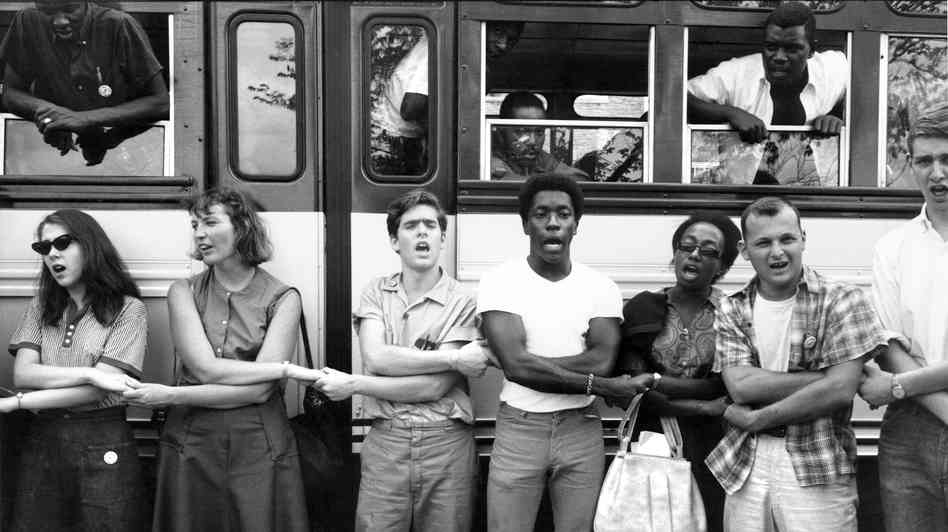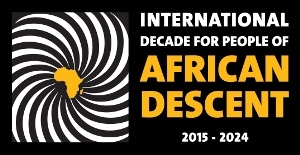Watching “Freedom Summer @ 50” on the PBS program “American Experience” last night was a poignant reminder of how the courage of ordinary Americans, young people, changed the course of history and enlarged our democracy. The superbly produced documentary by Stanley Nelson served to remind us that freedom is not free and Black citizenship is in its infancy. As I watched the grainy archival film footage, with my 15 year-old daughter next to me, it was sensory overload. I was watching a historical account that captured events that occurred during my childhood. It seemed inconceivable that the rigid segregation and racism that appeared ‘old’ on screen had actually been a part of the America of my youth.
 The most striking visual of the program, in my estimation, is the youthfulness, dare I say angelic, appearance of the young people who trekked to Mississippi during that summer of consequence. This was the future of America, acting boldly and laying claim to all that was supposedly the inheritance of every American except those with black skin. It is the innocence of the young people in the film, particularly the white student volunteers, that captured my attention and had me riveted to the screen. It was quite the dichotomy; liberal and idealistic white youth and their more seasoned and worldly Black counterparts working on behalf of the “least of these.” On more than one occasion during the program I had to take deep breaths to not be overwhelmed by the story.
The most striking visual of the program, in my estimation, is the youthfulness, dare I say angelic, appearance of the young people who trekked to Mississippi during that summer of consequence. This was the future of America, acting boldly and laying claim to all that was supposedly the inheritance of every American except those with black skin. It is the innocence of the young people in the film, particularly the white student volunteers, that captured my attention and had me riveted to the screen. It was quite the dichotomy; liberal and idealistic white youth and their more seasoned and worldly Black counterparts working on behalf of the “least of these.” On more than one occasion during the program I had to take deep breaths to not be overwhelmed by the story.
Though I was quite familiar with the saga of the three murdered civil rights workers – Michael Schwerner, James Chaney and Andrew Goodman – seeing body bags with their remains placed on stretchers by emotionless white police officers saddened and angered me. It is the casualness of hate from that era that is striking. The seeming ease by which whites abused Blacks and exerted control by violence, supported by the political and business establishment, and the police all cut to the core of white supremacy. It is hard to fathom the courage required to stand up to possible death under those circumstances or the faith that sustained that courage. Yet, the nation’s future took on that fight and did not waver.
It begs the question personally and hopefully introspectively in you, what have I to give? While watching the program I silently reflected on my own life and whether I have really done enough to forge a new America. Yes, I can point to decades of activism and service but it seems underwhelming in the face of what young people did five decades ago. Though placing one’s life in jeopardy is an unfair measure of commitment, it does speak to an undefinable courage that exceeds the bounds of most of us. I have often thought of the parents of Schwerner, Goodman and Chaney, and wondered their thoughts upon the loss of their children in a battle not of their making. Martyrs all for the cause, they were sons, a husband and siblings first, lost to a hate that was and is beyond human understanding. If they could walk in the valley of the shadow of death, what have I to give? For me, it puts my life in perspective and context. What have I to give? Much more than I have given.
As I survey the landscape, America is on a hill rolling backward to that valley those three young men traversed. In the rear view of our future are objects that are closer than they appear. The hate of 1960s Mississippi has re-emerged and taking shape in the form of new efforts to subvert the voting rights of people of color, deny children educational opportunity and adults economic security, and use violence to intimidate and control. While we look outward to identify terrorism on foreign soil a domestic terrorism birthed by racism is taking root. The proliferation of firearms and the rise in white hate have returned us to an era of intimidation and justifiable violence against Blacks and other non-white ethnic groups. Combined with a concerted effort to suppress voting rights, this time by the Republican offspring of 1960’s southern Democratic Dixiecrats, this domestic terrorism returns Blacks to a state of ‘rights by which no white man is bound to respect,’ as expressed by Supreme Court Chief Justice Roger Taney in his infamous opinion in the Dred Scott decision.
What have I to give? Perhaps the most important contribution we can all make is consistency. Too often we get lulled into a false sense of security, thinking that momentary gains are permanent features of a post-racial America. If nothing else, celebrating Freedom Summer reminds us of unfinished business and an agenda that we will likely see unfulfilled in our lifetime. I’m OK with that. So long as I know that one day I will hear Fannie Lou Hamer sing and Martin preach and see the faces of Schwerner, Goodman and Chaney while looking down on my descendants living free, then my commitment will not have been in vain. What have I to give? My heart, soul and if necessary, my life to help fulfill the mission of those courageous young people who declared freedom for Black Mississippians 50 years ago.
Walter Fields is the Executive Editor of NorthStarNews.com.

















